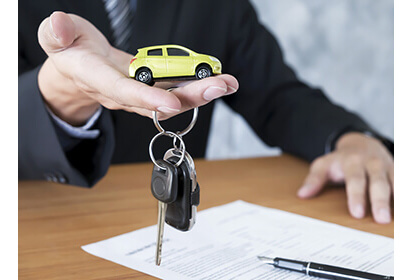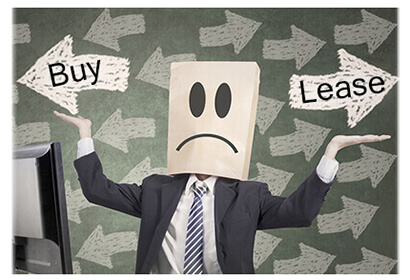
What Is Leasing a Car?
Have you ever needed a new car just for a small window of time? Maybe you just enjoy driving a new car every couple of years and don’t like to pay that nasty new car payment each month. That is where leasing a car comes in. You can lease a motor vehicle for a short period of time for an agreed upon monetary rate. Usually a short term car lease will last for around 36 months.
People lease a car for a number of reasons, such as wanting a new car but wanting to pay less for it, as leasing payments are often less expensive than the payments for buying. It also eliminates the hassle of selling a car when you’re done with it. Instead, you just return it at the end of the leasing period. Lease payments are also much lower than loan payments for any car, making it a viable option for those wanting a more expensive car than they have available funds. It is a popular choice for many car buyers, according to a 2013 report, leasing vehicles made up over 26 percent of all new car financing.
When you begin a lease agreement, there are things to consider, like upfront costs. These can include things like a security deposit, the first month’s payment, down payment, state taxes, registration fees, and other charges. To lease a car, the customer borrows the difference between what the car is currently worth and the value that the car is expected to have at the end of the leasing period. This makes the monthly payments considerably lower than other car loan payments, and as a bonus, the higher value the car is expected to have, the less money the customer has to borrow against it. This saves you money overall, even with upfront costs.

There are typically a few lease agreements to consider when leasing a car, as well. They often state that there is an early termination fee, as well as to how many miles selected by lessee to use throughout each year. Lease agreements also typically will have guide lines on how much normal every day wear and tear is allowed on the vehicle, and if there is more than that amount when the car is returned, the lessee may be charged. But before the lease is returned to your dealer and/or dealership, you have the free option to schedule an appointment to have your car inspected prior to the lease return date, eliminating the guessing game. Just make sure to schedule an appointment 1-2 months prior. This will give you the option to know if there are any issues, and how much it will cost, if they are not fixed before your lease return. If anything does exceed the normal everyday use, during this inspection, you will be notified of the issues. Leaving you the option to have those issues fixed prior by any body shop of your choice, or have the dealership fix the issue at the inspection quoted price.
Where and When Did Car Leasing Start?
Leasing goes back as far as time according to economists and historians. Leasing transactions occurred in ancient Sumer, based on the clay tablets found in the Sumerian city, Ur, which held information regarding lease agreements of agricultural items, land, cattle and other animals, and even water sources. Then in 1750 B.C., the Babylonian King, Hammurabi, created the famous Code of Hammurabi which brought forth the first leasing laws. Egypt, Rome, and Greece all participated in the leasing of property under this code.
The first recorded lease agreements in the United States date back to the leasing of horses, buggies, and wagons in the 1700s, but the more important leasing agreements came about in the 1870s. Not only were people leasing railroad cars and trains, Bell, the telephone company, began leasing when they opted to rent their phones instead of selling them. Renting cars originated in the year 1918 with Rent-A-Car Inc. In 1941, Zollie Frank made long term leasing possible and is generally given credit for being the founder of this type of business deals.

In 1952, a San Francisco solid leasing company by the name of the United States Leasing Corporation, opened its doors. The leases made here were ones in which the lessee paid all of the costs of insurance, taxes, and maintenance that came with equipment ownership.
In the early 1960s, the American-based business moved leasing to Europe, and the first leasing company, Deustche Lising GMBH, was formed in 1962 in Dusseldorf. Other leasing firms emerged in Western Europe during this time as well. By the middle of the decade, leasing companies in the U.S. had made at least 1 billion dollars, and by the end of the 80 year stretch, they have since exceeded 110 billion dollars. Such rapid economic growth in rental operations is because of the benefits found in a leasing transaction for both the lessor and the lessee.
From there it continued to blossom until the 1990s in Russia, and that is the era where modern leasing comes from in the domestic market, with the relocation of leasing enterprises on rental management. The new rules of leasing were developed by the foundation for the legislation of the Union Republics and the USSR. A federal law was released in 1998 that created a favorable economic, legal, and methodical condition for the development of leasing, including improving regulations and taxes, guidance documents on transactions, and licensing of leasing firms.
In recent years, the industry has been put through many legal, tax, and regulatory changes, but the American market has still allowed the industry to adapt to these changes to become stronger than ever.
In the 21st century, leasing has become one of the most effective and cost efficient ways to purchase equipment of any sort.
How Has Car Leasing Changed?
In 1946, the automobile industry saw major development with the emergence of a three man partnership that aimed to provide fleet management counseling to companies. By 1954 they translated this partnership into the leasing business. This company is credited with the first finance lease, where they would purchase vehicles and lease them at a monthly fee. When that lease was over, the company would sell the cars to pay off their original loan. Any profit was returned to the client, but they were billed if the resale value wasn’t enough to cover that loan.

From its roots, the car leasing industry boomed in the 1950s. By 1963,Time reported that the leasing amounts had doubled to 600,000 vehicles in five years. This boom in business led to a highly competitive industry that was worth $750 million and involved at least 3,000 companies.
Even car manufacturers hopped in on the trend. In 1962 Chrysler formed its own leasing company, as did Ford and General Motors. By 1970 there were more than 11,000 car dealers involved with leasing cars, and the amount of cars leased in America was greater than 1 million.
With success came rising interest rates that were as high as 21 percent in 1980. This put many smaller companies out of business. Today, however, car leasing is a huge factor in the nation’s economy, but it isn’t without its challenges. One component that worked against the industry in the early 2000s was the option for zero-percent financing. These automakers brought down the value of used vehicles and worked against their residual values, a key factor when deciding on monthly lease amounts. This meant that by 2003 the average vehicle value after a common 36-month term went down to 47 percent of the sticker price, a 53 percent decrease from the percentage in 1998.
When Did Auto Leasing Become Popular?
Earlier in the decade, U.S. auto sales were over 16 million units a year, and leasing accounted for at least 30 percent of the market. During 2008 before the recession hit, car leasing made up 22 percent of the market. Today, U.S. auto sales are barely hitting 10 million units a year, the lowest amount ever, but there has recently been a rebound of about 16 percent, meaning it is making a comeback.

Leasing is perhaps the most important selling tool for luxury models of cars like the BMW or Mercedes-Benz, and even for brands like Cadillac and Lincoln, as leasing lowers your monthly payments on these sought-after vehicles. Leasing high end models is still an easy option, causing an upswing in the industry as more people realize the benefits of leasing vs. buying a car. It can be said that leasing recently became popular again because of this.
Is Now a Good Time to Lease?
So how does leasing a car work? Before you decide if leasing is right for you or even figure out how to lease a car, it is important to consider the differences between leasing a car and buying a car.
Leasing vs. Buying a Car

Low Payments on New Cars
One of the biggest perks of leasing is that you can get a higher end car for a lower price than if you purchased it. The rate is calculated on sticker price, lease period, long term value of the car, and of course, interest. Leases last around 36 months and with residual values only being about 40-60% of the price of the car, leasing lets drivers afford a newer car than they could have otherwise. Buying a car only becomes cheap once it has been paid off over the course of a few years.
Down payment
Similar to buying a car, most leases require some down payment, although you may reduce this payment with a higher monthly payment. You will still have a down payment when you buy a car, but with leasing, you are getting a better deal for your budget.
Flexibility

You are able to get a new car every couple of years this way at an affordable rate instead of waiting to pay off the entire price when you buy a car. This also means, of course, that you won’t be responsible for major repair costs like you would with owning your own vehicle, giving you even more freedom than buying.
Now that you are aware of a few core differences between leasing or buying a car, it’s time to consider if you’re ready to lease your own car. Begin by checking your credit, as getting a good vehicle deal is largely dependent on credit. If your credit score is good and you are interested in keeping up with the latest and greatest vehicles, leasing is for you. Start thinking three to six months in advance to see what you can pay monthly. If you have a specific budget that a brand new car simply won’t fit, leasing might be for you. It really all comes down to what you can afford. Due to mileage restrictions it is also important to consider how often you will be driving the car. Generally speaking, though, if you want cheap payments on nice cars with little maintenance, consider leasing!
Overview of the Auto leasing timeline
Aristotle once stated that “true wealth lies not in the ownership of property, but in the right to use it.” This means a business does not need to own a property to make a profit from it; it is enough to have the right to use it by leasing it over a certain period of time and make money when desired–namely a car lease.

As it has been since B.C., from ancient Babylonia to Russia to Western Europe and the United States, leasing has been a profitable and manageable way to deal with property. Leasing is a great way to get the things that one needs in life, namely cars and other vehicles, that one might not be able to afford otherwise. With its steady incline in popularity and only a slight dip in capital and business, leasing is an industry that benefits both lessee and lessor and appears to have a strong future that will never lose its shine or new car smell.
